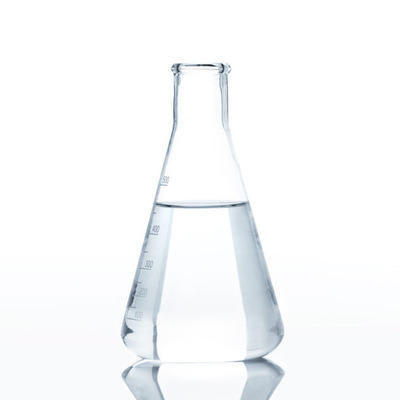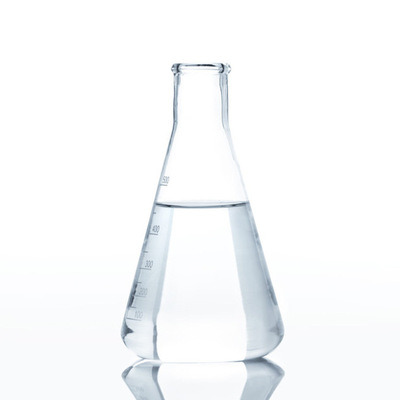#Tetrahydrofuran
Text
The use and precautions of tetrahydrofuran
Tetrahydrofuran, also known as THF, is a colorless, sweet-tasting liquid commonly used in various industries. Its chemical formula is C4H8O and it is a versatile solvent with a variety of industrial applications. In this article, we will discuss the different uses and considerations of THF.
4 uses of tetrahydrofuran

Pharmaceutical industry: Tetrahydrofuran is commonly used as a solvent and reaction medium in the pharmaceutical industry. Used in the production of a variety of drugs including antibiotics, hormones and antihistamines.
Polymer Industry: Tetrahydrofuran is also used as a solvent in the polymer industry. It is used to dissolve polymers such as polyvinyl chloride (PVC) and polystyrene. It is also used as a component in some polymerization reactions.
Chemical industry: Tetrahydrofuran is used as a reactant in chemical synthesis reactions. It is used in the production of various chemicals such as adipic acid, hexamethylene diisocyanate (HDI) and gamma-butyrolactone.
Laboratory Research: Tetrahydrofuran is commonly used as a solvent in laboratory research. It is used to dissolve various compounds and is a commonly used reagent in organic chemistry experiments.
Precautions when handling tetrahydrofuran
Flammability: Tetrahydrofuran is highly flammable and should be stored away from heat or flame. It should not be stored near any oxidizing agents.
Toxicity: Tetrahydrofuran can be dangerous if ingested, inhaled, or absorbed through the skin. It can cause dizziness, headaches, nausea, and eye and skin irritation. Use extreme caution when handling THF and always wear protective clothing, gloves, and goggles.
Storage: Tetrahydrofuran should be stored in a cool, dry and well-ventilated place. It should be stored in a closed container to prevent evaporation and moisture absorption.
Disposal: Tetrahydrofuran should be disposed of appropriately in accordance with local environmental regulations. It should not be poured down the drain or discarded in the trash.
Tetrahydrofuran (THF) has many uses in various industries, including the pharmaceutical, polymer and chemical industries. It is commonly used as a solvent and reaction medium, and its versatility makes it an important ingredient in many industrial processes. Keberry is a company specializing in the production of high quality Tetrahydrofuran. As a leading supplier of specialty chemicals, Keberry offers THF of high purity and strict quality control. However, due to the potential dangers of THF, appropriate precautions must be taken when handling this chemical. Keberry takes safety very seriously and provides detailed instructions for the safe handling, storage and disposal of THF to ensure its safe and effective use in various industries.
0 notes
Text
Exploring the Versatility of Tetrahydrofuran (THF) and Cyclohexanone in Various Industries
Tetrahydrofuran (THF) is a crucial component in the production of several polymers. It is a key ingredient in the synthesis of polytetramethylene ether glycol (PTMEG), which is used in the manufacturing of polyurethanes, elastomers, and spandex fibers. Tetrahydrofuran (THF) is also used in the production of polyvinyl chloride (PVC) resins and polyvinylidene fluoride (PVDF). For more details call us at +86-510-83223090.
0 notes
Text
youtube
Watch the American Climate Leadership Awards 2024 now: https://youtu.be/bWiW4Rp8vF0?feature=shared
The American Climate Leadership Awards 2024 broadcast recording is now available on ecoAmerica's YouTube channel for viewers to be inspired by active climate leaders. Watch to find out which finalist received the $50,000 grand prize! Hosted by Vanessa Hauc and featuring Bill McKibben and Katharine Hayhoe!
#ACLA24#ACLA24Leaders#youtube#youtube video#climate leaders#climate solutions#climate action#climate and environment#climate#climate change#climate and health#climate blog#climate justice#climate news#weather and climate#environmental news#environment#environmental awareness#environment and health#environmental#environmental issues#environmental justice#environment protection#environmental health#Youtube
16K notes
·
View notes
Text
Tetrahydrofuran Inhouse GC Standard - Cas No: 109-99-9 - Tetrahydrofuran - Butylene oxide; Oxolane; Tetramethylene oxide - Simson Chemie
0 notes
Text
The price of Tetrahydrofuran in the United States for Q4 2023 reached 2080 USD/MT. The report details the latest developments, updates, and trend in the global tetrahydrofuran market, offering stakeholders timely and relevant information.
0 notes
Text
Tetrahydrofuran Prices Trend, Price, Monitor, News, Analytics & Forecast

Tetrahydrofuran (THF) Prices: For the Quarter Ending March 2024
Tetrahydrofuran (THF) is a vital chemical compound extensively used in various industries, ranging from pharmaceuticals to polymers. Its versatility and unique properties make it a sought-after solvent and reactant in many processes. Understanding the pricing dynamics of THF is crucial for businesses reliant on this compound. The market for THF is influenced by several factors, including raw material costs, demand-supply dynamics, and macroeconomic trends.
One of the primary drivers affecting THF prices is the cost of raw materials, particularly butanediol (BDO), which is a key precursor in THF production. Fluctuations in the prices of BDO, which is derived from fossil fuels, can directly impact the production cost of THF. Any disruptions in the supply of BDO or changes in its pricing due to geopolitical events or shifts in oil prices can ripple through to THF prices.
Additionally, demand-supply dynamics play a pivotal role in determining THF prices. The demand for THF is influenced by its wide range of applications, including as a solvent in chemical reactions, a polymerization initiator, and a precursor in the manufacture of elastomers and pharmaceuticals. Industries such as pharmaceuticals, coatings, and adhesives heavily rely on THF, and any fluctuations in their demand can impact THF prices. Moreover, supply-side factors such as production capacity, plant shutdowns for maintenance, or the entry of new manufacturers can affect the overall supply of THF in the market, thereby influencing its prices.
Get Real Time Prices of Tetrahydrofuran (THF): https://www.chemanalyst.com/Pricing-data/tetrahydrofuran-1213
Macroeconomic factors also contribute to the volatility in THF prices. Economic indicators such as GDP growth, inflation rates, and currency exchange rates can indirectly impact THF prices. For instance, a robust economy with strong industrial activity may lead to increased demand for THF, driving prices higher. Conversely, economic downturns or currency devaluations can dampen demand, exerting downward pressure on THF prices.
Moreover, regulatory changes and environmental policies can influence THF prices. Stringent regulations regarding the handling, storage, and disposal of THF and its by-products can increase compliance costs for manufacturers, potentially leading to higher prices for end-users. Furthermore, environmental initiatives aimed at reducing greenhouse gas emissions or promoting renewable energy sources may impact the availability and pricing of raw materials used in THF production, consequently affecting its prices.
Global market dynamics also play a crucial role in determining THF prices. As THF is traded internationally, developments in major producing and consuming regions can have ripple effects on prices worldwide. Events such as trade disputes, geopolitical tensions, or natural disasters can disrupt supply chains and trade flows, leading to price fluctuations in the THF market.
In conclusion, the pricing of Tetrahydrofuran (THF) is influenced by a multitude of factors, including raw material costs, demand-supply dynamics, macroeconomic trends, regulatory changes, and global market dynamics. Businesses involved in the production or consumption of THF need to closely monitor these factors to anticipate price movements and mitigate risks. Moreover, fostering strategic partnerships with reliable suppliers and staying abreast of industry developments can help companies navigate the complexities of the THF market and make informed decisions to optimize their operations and profitability.
Get Real Time Prices of Tetrahydrofuran (THF): https://www.chemanalyst.com/Pricing-data/tetrahydrofuran-1213
Contact Us:
ChemAnalyst
GmbH - S-01, 2.floor, Subbelrather Straße,
15a Cologne, 50823, Germany
Call: +49-221-6505-8833
Email: [email protected]
Website: https://www.chemanalyst.com
0 notes
Text
#Tetrahydrofuran Price News#Tetrahydrofuran Price Index#Tetrahydrofuran Historical Price#Tetrahydrofuran Price Trend
0 notes
Text
youtube
Watch the 2024 American Climate Leadership Awards for High School Students now: https://youtu.be/5C-bb9PoRLc
The recording is now available on ecoAmerica's YouTube channel for viewers to be inspired by student climate leaders! Join Aishah-Nyeta Brown & Jerome Foster II and be inspired by student climate leaders as we recognize the High School Student finalists. Watch now to find out which student received the $25,000 grand prize and top recognition!
#ACLA24#ACLA24HighSchoolStudents#youtube#youtube video#climate leaders#climate solutions#climate action#climate and environment#climate#climate change#climate and health#climate blog#climate justice#climate news#weather and climate#environmental news#environment#environmental awareness#environment and health#environmental#environmental issues#environmental education#environmental justice#environmental protection#environmental health#high school students#high school#youth#youth of america#school
16K notes
·
View notes
Text

To start the engine of the SR 71,
you needed: Triethylborane (TEB), also called triethylboron, is an organoborane (a compound with a B–C bond). It is a colorless pyrophoric liquid. Its chemical formula is (CH3CH2)3B or (C2H5)3B, abbreviated Et3B. It is soluble in organic solvents tetrahydrofuran and hexane.
Triethylborane would ignite with the fuel JP7 when it hits oxygen. The maintenance crew would begin to start the engines one at a time. Look at the beautiful green color that it makes when they’re combined together. 💚
~ Linda Sheffield
@Habubrats71 via X

21 notes
·
View notes
Note
Would you be willing to give or link a tutorial on how you carved the tail off your McDonald’s Sparkleworks so perfectly? Now I’m wondering if I can try it with one of the many repeat McD’s I have!
I just carved it with an X-Acto blade a little bit at a time. I didn't have a plan or anything. The vinyl cuts relatively easy with a fresh, sharp blade.
Most of the shape of the legs is already pretty well defined you just have to be a little careful after removing the bulk of the tail.
After that, to smooth out any weird carving marks, hit it with a 330 grit wet/dry sandpaper a little bit, then wipe with acetone to smooth it out a little more. Wash with dish soap and let dry.
If that ends up too shiny after it's had time to reset, scuff vigorously with melamine sponge.
I just used a regular drill to drill out a tail hole. Tail installation was the same as any MLP since the McDonald's half-brushable G3s are hollow in the body and the head attaches like the bigger G3s. I just boiled the whole pony and then wrestled the head off.
I also have tetrahydrofuran which is to vinyl as acetone is to plastic (meaning it melts it) which I swabbed over the carved and sanded areas to smooth it out more, but is an expensive and very toxic industrial solvent and I don't recommend getting into that unless you intend to modify vinyl a LOT.
Modding vinyl can be a pain, so go slow.
14 notes
·
View notes
Text
Dimethyl ether, carbon tetrachloride, sodium thiohydrate, pyridine, hydrogen bromide, barium hydroxide, barium sulfide, phenol, hydrochloric acid, dibromomethane, sodium hydroxide, n-butylene ether, 3-methylpyridine, bromoethane, aluminum trichloride solution, benzene, ethanethiol, octadecyl acetamide, acetonitrile, N N-diisopropylethylamine, hydrogen fluoride [anhydrous], potassium antimony tartrate, n-butylacetate, ethylene oxide, cyclohexane, potassium hydroxide, aluminum trichloride [anhydrous], 2-nitroanisole, 1, 2-dichloropropene, n-butanol, magnesium, O O ≤-diethylthiophosphoyl chloride, phenol solution, N-(phenylethyl-4-piperidine) propionamide citrate, ethyl acetate, 1,4-xylene, 2-aminopropane, isophthaloyl chloride, 2-chlorotoluene, cyclopentene, propionic acid, hydrofluoric acid, 2-butenaldehyde, 2-methylpentane, ethylamine, bromine, coal tar pitch, ethyl formate, ammonia solution [containing ammonia > 10%] 1-aminohydrin, 4-ethoxyphenylamine, diisopropylamine, sodium ethanolate, nitrifying asphalt, hydrazide hydrate [containing hydrazide ≤ 64%], dimethyl sulfate, acetic acid [content > 80%], acetaldehyde, 2-butylketone, aluminum borohydrate, phenylethanolnitrile, 2-chlorobenzoyl chloride, sodium hypochlorite solution [containing available chlorine > 5%], 2-aminophenol, chloroplatinic acid, barium chloride, tert-butylbenzene, tribromide, methyl sulfide, Diphosphate pentasulfide, diethylamine, chlorobenzene, n-butylbenzene, 1,3-xylene, hydrogen peroxide solution [content > 8%], terephthaloyl chloride, red phosphorus, tetramethyl ammonium hydroxide, methanol, propionaldehyde, 2-methoxyphenylamine, bleach powder, triethyl propropionate, 1-bromobutene, cyclohexanone, di-(tert-butylperoxy) phthalate [paste Content ≤ 52%], tetrahydrofuran, trichloroethylene, magnesium aluminum powder, formic acid, sodium ethanol ethanol solution, isopropyl ether, acetic acid solution [10% < content ≤ 80%], 2-methyl-1-propanol, diethyl carbonate, sodium aluminum hydroxide, 2-methylpyridine, n-butylamine, toluene, thiourea, magnesium alloy [flake, banded or striped Containing magnesium > 50%], methyl benzoate, hydrobromide, 4-methylpyridine, iodine monochloride, sodium sulfide, 3-bromo-1-propene, 2-propanol, potassium borohydroxide, triethylamine, ammonia, 4-nitro-2-aminophenol, 1, 2-epichlorohydrin, 1-propanol, cyclopentane chloride, n-propyl acetate, bromoacetic acid, zinc chloride solution, trichloromethane, 1-bromopropane, monoamine [anhydrous], perchloric anhydride acetic anhydride solution, 1-bromopropane Potassium hydroxide solution [content ≥ 30%], boric acid, sodium borohydrate, hydroacetic acid bromide solution, acrylic acid [stable], cyclopentane chloride, ammonium hydrogen sulfate, calcium hydroxide, 2-ethoxyaniline, dimethyl carbonate, sodium nitroso, monomethylamine solution, zinc chloride, hydrogen sulfide, trimethyl acetate, iodine trichloride, nitric acid, sodium hydroxide solution [content ≥ 30%], trimethyl orthoformate, hydrogen chloride [anhydrous], 4-methoxyaniline, sulfur, succinile, acetic anhydride, dipropylamine, methyl acetate, isopropylbenzene, propionyl chloride, ethyl formate, phosphorus pentoxide, formaldehyde solution, nitrogen trifluoride, acetone, ethanol [anhydrous], white phosphorus, 1, 2-xylene, 1, 3-dichloropropene, 1, 1, 1-dichloroethane, N N-diethylethanolamine, sulfuric acid, N, N-dimethyl formamide, methyl mercaptan, 4-chlorotoluene, 1, 2-dichloroethane, dichloromethane, succinyl chloride, 2, 3-dichloropropene, xylene isomer mixture, tartrate nicotine, cyclopentane, petroleum ether, bromocyclopentane Potassium perchlorate, potassium chlorate, aluminum powder, chromic acid, iron chloride, lead nitrate, magnesium powder, nickel chloride, nickel sulfate, perchloroethylene, phosphate, potassium dichromate, sodium dichromate, zinc nitrate
2 notes
·
View notes
Text
Discover the benefits of using Tetrahydrofuran ZL-439 Supplement
As a commonly used additive, Tetrahydrofuran ZL-439 has advantages in all walks of life. Let’s learn about it with the editor. If you are interested in our Tetrahydrofuran ZL-439, you can directly click to learn more

Improve solubility:
Tetrahydrofuran ZL-439 has good solubility and is compatible with many different types of substances. It can be quickly dissolved and dispersed in the matrix material, thus improving the uniformity and stability of the material. This makes the additive widely used in the fields of coatings, adhesives and resins to improve the handling performance and coating quality of products.
Improve adhesive performance:
Tetrahydrofuran ZL-439 exhibits excellent performance in bonding applications. It enhances the adhesion between the base material and the adhesive, and improves bond strength and durability. This makes the additive widely used in automotive manufacturing, aerospace and construction to ensure reliable joining of components and structures.
Provides Antioxidant Protection:
Tetrahydrofuran ZL-439 can effectively prevent the occurrence of oxidation reactions. It can form a protective layer on the surface of the base material to block the erosion of the material by air and other oxidants. This antioxidant protection helps prolong the life of products, especially in areas such as plastics, rubber and coated materials.
Improve flame retardant properties:
Tetrahydrofuran ZL-439 also plays an important role in improving the flame retardancy of the material. It improves the flame retardancy of the material and reduces the risk of fire. Therefore, in the fields of electrical and electronic equipment, furniture and building materials, this additive is widely used to meet safety standards and regulatory requirements.
Adjustable performance:
Tetrahydrofuran ZL-439 has the advantage of adjustable properties. By adjusting the ratio of additives or using them in combination with other compounds, the characteristics of the product can be changed according to the needs and requirements of different applications. This flexibility makes Tetrahydrofuran ZL-439 an ideal choice during product development and optimization.
It can be seen that Tetrahydrofuran ZL-439 additive has significant advantages in improving product performance.
It improves solubility, provides antioxidant protection, enhances adhesion properties, improves flame retardancy, and has the advantage of tunable properties. Tetrahydrofuran ZL-439 provides long-lasting support for the function and performance of products, whether in the coatings industry, in the construction sector or in the manufacture of electrical and electronic equipment. By fully exploiting the advantages of this additive, companies can gain a competitive advantage and meet the market demand for high-performance products.
Welcome to contact us for more content about Tetrahydrofuran ZL-439 additive
0 notes
Text
Wuxi Wanli Chemical Co; Ltd - Sodium Perborate Manufacturer
Wanli Chemical Co., Ltd. are specializing in the production of various types of sodium peroxycarbonate detergent chemical raw materials. After years of accumulation, it is now a high-tech joint-stock chemical enterprise integrating the production and sales of chemical raw materials. It has multiple production bases and caustic soda. For more details call us at +86-13912490938

0 notes
Text
Tetrahydrofuran Inhouse GC Standard - Cas No: 109-99-9 - Tetrahydrofuran - Butylene oxide; Oxolane; Tetramethylene oxide - Simson Chemie
https://simsonchemie.com/Calibration-Standards/Tetrahydrofuran-2
0 notes
Text
Butanediol Market Demand, Opportunities and Forecast By 2028
This Butanediol market report has been prepared by considering several fragments of the present and upcoming market scenario. The market insights gained through this market research analysis report facilitates more clear understanding of the market landscape, issues that may interrupt in the future, and ways to position definite brand excellently. It consists of most-detailed market segmentation, thorough analysis of major market players, trends in consumer and supply chain dynamics, and insights about new geographical markets. The market insights covered in Butanediol report simplifies managing marketing of goods and services effectively.
The butanediol market is expected to witness a market growth at a rate of 7% in the forecast period of 2021 to 2028.
Download Sample PDF Copy of this Report to understand structure of the complete report @ https://www.databridgemarketresearch.com/request-a-sample/?dbmr=global-butanediol-market
Market Overview:
Major factors that are expected to boost the growth of the butanediol market in the forecast period are the increase in the concerning issues regarding the environmental. Furthermore, the rise in the need for sustainable products is further anticipated to propel the growth of the butanediol market. Moreover, the growing of the manufacturing of the plant of butaneodiol is further estimated to cushion the growth of the butanediol market. On the other hand, the unsuitable situations occurring because of the COVID-19 pandemic outbreak is further projected to impede the growth of the butanediol market in the timeline period.
Some of the major players operating in the Butanediol market are BASF SE, Mitsubishi Chemical Holdings Corporation, Ashland, Sipchem, LyondellBasell Industries Holdings B.V., The Chemical Company, KH Chemicals, Henan Haofei Chemical Co.,Ltd., Merck KGaA, Shanxi Sanwei Group Co., Ltd., SINOPEC YIZHENG CHEMICAL FIBRE LIMITED LIABILITY COMPANY, China National Bluestar (Group) Co,Ltd., Sichuan Tianhua Co., Ltd., HENAN KAIXIANG CHEMICAL CO., LTD., Xinjiang Tianye Co.,Ltd, TRInternational, GJChemical.com, Genomatica, Inc, among other domestic and global players. Market share data is available for global, North America, Europe, Asia-Pacific (APAC), Middle East and Africa (MEA) and South America separately. DBMR analysts understand competitive strengths and provide competitive analysis for each competitor separately. among others.
Global Butanediol Market Scope
The butanediol market is segmented on the basis of type and application. The growth amongst the different segments helps you in attaining the knowledge related to the different growth factors expected to be prevalent throughout the market and formulate different strategies to help identify core application areas and the difference in your target markets.
On the basis of type, the butanediol market is segmented into industrial grade, and cosmetic grade.
On the basis of application, the butanediol market is segmented into polybutylene terephthalate (PBT), tetrahydrofuran (THF), GBL, polyurethane, and others.
Browse More About This Research Report @ https://www.databridgemarketresearch.com/reports/global-butanediol-market
Table of Content:
Part 01: Executive Summary
Part 02: Scope of the Report
Part 03: Global Butanediol Market Landscape
Part 04: Global Butanediol Market Sizing
Part 05: Global Butanediol Market Segmentation By Product
Part 06: Five Forces Analysis
Part 07: Customer Landscape
Part 08: Geographic Landscape
Part 09: Decision Framework
Part 10: Drivers and Challenges
Part 11: Market Trends
Part 12: Vendor Landscape
Part 13: Vendor Analysis
Browse Trending Reports:
Global Meat Ingredients Market – Industry Trends and Forecast to 2028https://www.databridgemarketresearch.com/reports/global-meat-ingredients-market
Global Emission Monitoring System Market – Industry Trends and Forecast to 2028https://www.databridgemarketresearch.com/reports/global-emission-monitoring-system-market
Global Optogenetics Actuators and Sensors Market – Industry Trends and Forecast to 2028https://www.databridgemarketresearch.com/reports/global-optogenetics-actuators-and-sensors-market
Global Thermal Barrier Coatings Market – Industry Trends and Forecast to 2028https://www.databridgemarketresearch.com/reports/global-thermal-barrier-coatings-market
Global Automotive Battery Market – Industry Trends and Forecast to 2028https://www.databridgemarketresearch.com/reports/global-automotive-battery-market
About Data Bridge Market Research:
An absolute way to predict what the future holds is to understand the current trend! Data Bridge Market Research presented itself as an unconventional and neoteric market research and consulting firm with an unparalleled level of resilience and integrated approaches. We are committed to uncovering the best market opportunities and nurturing effective information for your business to thrive in the marketplace. Data Bridge strives to provide appropriate solutions to complex business challenges and initiates an effortless decision-making process. Data Bridge is a set of pure wisdom and experience that was formulated and framed in 2015 in Pune.
Data Bridge Market Research has more than 500 analysts working in different industries. We have served more than 40% of the Fortune 500 companies globally and have a network of more than 5,000 clients worldwide. Data Bridge is an expert in creating satisfied customers who trust our services and trust our hard work with certainty. We are pleased with our glorious 99.9% customer satisfaction rating.
Contact Us: -
Data Bridge Market Research
Email: – [email protected]
0 notes
Text
Furfural Derivatives Market Demand By Product By Application, Product By Route, Region And Forecast To 2030: Grand View Research Inc.
San Francisco, 16 May 2024: The Report Furfural Derivatives Market Size, Share & Trends Analysis Report By Product By Route (Tetrahydrofuran, Cyclopentanone), By Product By Application (1-5 Pentanediol, Furoic Acid), By Region, And Segment Forecasts, 2023 – 2030The global furfural derivatives market size is expected to reach USD 21.84 billion by 2030, registering a CAGR of 7.24% from 2023 to…

View On WordPress
0 notes
Text
(R)-(-)-2-Amino-1-propanol CAS#: 35320-23-1

IdentificationPhysical DataSpectraRoute of Synthesis (ROS)Safety and HazardsOther Data
Identification
Product Name(R)-(-)-2-Amino-1-propanolIUPAC Name(2R)-2-aminopropan-1-olMolecular StructureCAS Registry Number 35320-23-1MDL NumberMFCD00064413Synonymsd-Alaninol35320-23-1(R)-(-)-2-Amino-1-propanol(R)-2-Aminopropan-1-ol(2R)-2-aminopropan-1-ol(R)-2-amino-1-propanol(R)-Alaninol2-Aminopropanol, (-)-(R)-2-aminopropanol(-)-2-aminopropanol1-Propanol, 2-amino-, (2R)-H-D-Ala-old-2-amino-1-propanol770ZI70L3Q(2r)-2-amino-1-propanolR-2-Amino-1-propanolH-D-Alaninol2-Amino-propan-1-olD-2-amino-propanolUNII-770ZI70L3QMFCD00064413(d)-alaninol(-)-alaninol2(R)-aminopropanol2-Amino-1-propanol #Spectrum2_000831Spectrum3_001969(2R)-2-amino propanol(R)-2-aminopropan-1olR-(-)-ALANINOL(-)-2-amino-1-propanol(R)-2-amino-propan-1-ol(R)-2-aminopropan -1-olBSPBio_003569(2R)-2-azanylpropan-1-ol(R)-1-hydroxymethylethylamineSPBio_000781KBio3_002920DTXSID30904764(A+/-)-2-amino-propan-1-ol(R)-(+)-2-amino-1-propanolCHEBI:195478(R) -(-)-2-amino-1-propanolCCG-40291AKOS006240049AKOS015840241CS-W011362HY-W010646NCGC00177987-01(R)-(-)-2-Amino-1-propanol, 98%AC-24153((R)-2-HYDROXY-1-METHYLETHYL)AMINEA6201AM20090557EN300-33361A-4546M03439A1-00441Q27266526Z3460761402A3Molecular FormulaC3H9NOMolecular Weight75.11InChIInChI=1S/C3H9NO/c1-3(4)2-5/h3,5H,2,4H2,1H3/t3-/m1/s1InChI KeyBKMMTJMQCTUHRP-GSVOUGTGSA-NIsomeric SMILESC(CO)N
Patent InformationPatent IDTitlePublication DateCN116003406Heteroaromatic ring oxynitride and preparation method and application thereof2023CN115215799Urea multi-target tyrosine kinase inhibitor and various medical applications thereof2022US2021/139454FORMAMIDE COMPOUND, PREPARATION METHOD THEREFOR AND APPLICATION THEREOF2021US2020/34708NOVEL PROBE COMPOUNDS FOR FLUORESCENCE AND/OR CIRCULAR DICHROISM SENSOR FOR AMINE COMPOUNDS INCLUDING AMINO ALCOHOLS, AND SIMULTANEOUS ANALYSIS METHOD OF FLUORESCENCE AND CIRCULAR DICHROISM2020WO2019/1016412-HETARYLPYRIMIDINE-4-CARBOXAMIDES AS ARYL HYDROCARBON RECEPTOR ANATGONISTS2019
Physical Data
AppearanceSlightly yellow to clear liquid
Spectra
Description (NMR Spectroscopy)Nucleus (NMR Spectroscopy)Solvents (NMR Spectroscopy)Frequency (NMR Spectroscopy), MHzChemical shifts1Hchloroform-d1Chemical shifts1Hdimethylsulfoxide-d6400Chemical shifts1Hchloroform-d1400Chemical shifts1HCDCl3
Description (IR Spectroscopy)Solvent (IR Spectroscopy)Spectrumneat (no solvent)BandsCDCl3Bandssolid Ar
Description (UV/VIS Spectroscopy)Absorption Maxima (UV/VIS), nmin the presence of organic compounds567
Route of Synthesis (ROS)
Route of Synthesis (ROS) of (R)-(-)-2-Amino-1-propanol CAS# 35320-23-1
ConditionsYieldWith triethylamine In methanol at 0 - 20℃; for 12h;Experimental Procedure4.1.44. tert-Butyl (R)-(1-hydroxypropan-2-yl)carbamate (42)To a solution of (R)-()-2-amino-1- propanol 36 (2.00 g,26.6 mmol) and triethylamine (4.27 mL, 30.6 mmol) in MeOH(20 mL) at 0 C was added di-tert-butyl dicarbonate (6.42 g,29.4 mmol). After stirring at room temperature for 12 h, the solventwas evaporated in vacuo. The residuewas diluted with CH2Cl2. Afterwashing with water, the organic phase was evaporated to drynessfurnishing the title compound (4.60 g, 100%), which was usedwithout further purification in the next step. 1H NMR (300 MHz,CDCl3) d 4.91 (d, J 6.3 Hz, 1H), 3.70 (s, 1H), 3.56 (dt, J 10.8, 5.6 Hz,1H), 3.45 (dd, J 11.5, 5.6 Hz, 2H), 1.39 (s, 9H), 1.10 (d, J 6.8 Hz,3H). 13C NMR (75 MHz, CDCl3) d 156.91 (s), 80.15 (s), 67.46 (s), 49.05(s), 28.99 (s), 17.92 (s).100%With sulfonic-acid-functionalized silica In dichloromethane at 20℃; for 0.166667h;95%With triethylamine In tetrahydrofuran at 0 - 20℃; for 18h;Experimental ProcedureA solution of 10 gm (133 mMol) (R)-2-amino-1-propanol and 14.8 gm (146.5 mMol) triethylamine in 500 mL tetrahydrofuran was cooled to 0° C. To this solution was added all at once 30 gm (133 mMol) di-tert-butyl dicarbonate. The reaction mixture was allowed to stir for about 18 hours at room temperature. The reaction mixture was then concentrated under reduced pressure and the resulting residue was dissolved in 300 mL ethyl acetate. This solution was washed twice with 200 mL of water, once with 200 mL of saturated aqueous sodium chloride, dried over magnesium sulfate and concentrated under reduced pressure to provide 22 gm (94%) of the desired compound as a yellow oil.1H-NMR(CDCl3): δ 4.71 (m, 1H), 3.72 (m, 1H), 3.59-3.46 (m, 2H), 2.86 (m, 1H).94%
Safety and Hazards
Pictogram(s)SignalDangerGHS Hazard StatementsH314 (100%): Causes severe skin burns and eye damage Precautionary Statement CodesP260, P264, P280, P301+P330+P331, P302+P361+P354, P304+P340, P305+P354+P338, P316, P321, P363, P405, and P501(The corresponding statement to each P-code can be found at the GHS Classification page.)
Other Data
TransportationStore at room temperature, in container tightly sealed; Protect from light.HS CodeStorageStore at room temperature, in container tightly sealed; Protect from light.Shelf Life2 yearsMarket Price
DruglikenessLipinski rules componentMolecular Weight75.1106logP-0.815HBA2HBD2Matching Lipinski Rules4Veber rules componentPolar Surface Area (PSA)46.25Rotatable Bond (RotB)1Matching Veber Rules2
Use Pattern(R)-(-)-2-Amino-1-propanol CAS 35320-23-1 as an intermediate in organic synthesis, it is used for the synthesis of emulsifiers, surfactants, dyes, rubber stabilizers, and other organic compounds. In the pharmaceutical field, D-Aminopropanol is commonly used as a pharmaceutical intermediate for the synthesis of various drugs, such as beta-blockers, adrenergic agonists, and others.
Read the full article
0 notes
Text
Polytetramethylene Ether Glycol Prices, Price Trend, Pricing, News, Analysis & Forecast

Polytetramethylene Ether Glycol (PTMEG) prices are subject to various factors, influencing its fluctuation in the market. PTMEG, a vital component in the production of polyurethanes, finds extensive application across diverse industries, including textiles, automotive, and construction. The pricing dynamics of PTMEG are intricately linked with the supply-demand equilibrium, raw material costs, and macroeconomic trends.
One of the primary determinants of PTMEG prices is the supply-demand balance. As with any commodity, when demand outweighs supply, prices tend to rise, and vice versa. Factors such as industrial expansion, technological advancements, and evolving consumer preferences can significantly influence demand. Conversely, disruptions in production, logistical challenges, or regulatory changes can impact the supply side, leading to price fluctuations.
Raw material costs play a crucial role in shaping PTMEG prices. The key raw material for PTMEG production is tetrahydrofuran (THF), derived primarily from butanediol (BDO). Fluctuations in BDO prices, which are influenced by factors like feedstock availability, energy costs, and market speculation, directly affect THF prices and consequently, PTMEG prices. Additionally, variations in the prices of other essential inputs, such as catalysts and utilities, further contribute to price volatility.
Get Real Time Prices of Polytetramethylene Ether Glycol (PTMEG): https://www.chemanalyst.com/Pricing-data/polytetramethylene-ether-glycol-ptmeg-1278
Global economic conditions also impact PTMEG prices. Economic growth or recession in major economies can influence demand for end-use products, consequently affecting demand for PTMEG. For instance, during periods of economic expansion, increased construction activity and consumer spending typically drive up demand for PTMEG-containing products like foams, elastomers, and coatings, leading to higher prices. Conversely, economic downturns may dampen demand, exerting downward pressure on prices.
Market competition and industry dynamics also play a significant role in determining PTMEG prices. The presence of multiple manufacturers and suppliers often leads to competitive pricing strategies aimed at gaining market share. Price wars or strategic alliances among industry players can impact pricing dynamics. Moreover, technological innovations or process improvements that enhance production efficiency may influence cost structures, thereby affecting price competitiveness.
Geopolitical factors and regulatory developments can introduce additional complexities to PTMEG pricing. Trade policies, tariffs, and geopolitical tensions can disrupt supply chains and trade flows, affecting the availability and cost of PTMEG in various regions. Furthermore, environmental regulations and sustainability initiatives may necessitate investments in cleaner production technologies or compliance measures, potentially impacting production costs and, consequently, prices.
The COVID-19 pandemic demonstrated the susceptibility of PTMEG prices to external shocks. Disruptions in global supply chains, reduced industrial activity, and shifts in consumer behavior during lockdowns significantly impacted demand for PTMEG and its precursors, leading to price volatility. While some sectors like healthcare witnessed increased demand for PTMEG-based products such as medical equipment and protective gear, others like automotive and apparel experienced sharp declines.
Looking ahead, several trends are poised to influence PTMEG prices. The growing emphasis on sustainability and environmental stewardship is driving demand for bio-based PTMEG alternatives derived from renewable feedstocks. This shift towards greener alternatives could reshape market dynamics and pricing structures in the long term. Additionally, advancements in production technologies, such as bio-based synthesis and process intensification, may offer opportunities to mitigate price volatility and enhance supply chain resilience.
In conclusion, Polytetramethylene Ether Glycol (PTMEG) prices are subject to a myriad of factors, including supply-demand dynamics, raw material costs, economic conditions, industry competition, geopolitical developments, and regulatory pressures. Understanding these factors and their interplay is essential for stakeholders in the PTMEG value chain to navigate market uncertainties, optimize pricing strategies, and sustainably meet the evolving needs of end-users across diverse industries.
Get Real Time Prices of Polytetramethylene Ether Glycol (PTMEG): https://www.chemanalyst.com/Pricing-data/polytetramethylene-ether-glycol-ptmeg-1278
Contact Us:
ChemAnalyst
GmbH - S-01, 2.floor, Subbelrather Straße,
15a Cologne, 50823, Germany
Call: +49-221-6505-8833
Email: [email protected]
Website: https://www.chemanalyst.com
0 notes